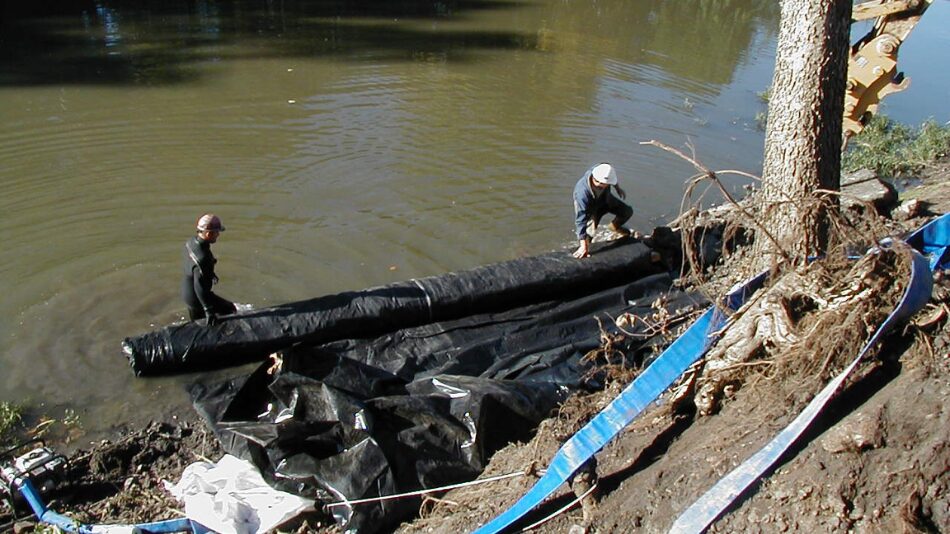
The AquaDam® is initially positioned high up on the bank and securely fastened to a nearby tree. Two workers stand behind the AquaDam® to gradually build internal pressure as it fills with water. Once the pressure reaches a sufficient level, they will cautiously step back, allowing the AquaDam® to unroll by approximately two feet.

Two workers are equipped with full diving gear to efficiently remove underwater rocks and debris, ensuring the protection of the AquaDam® and minimizing leakage. As head pressure builds inside the AquaDam, the workers strategically step back, allowing the dam to unroll a few feet.
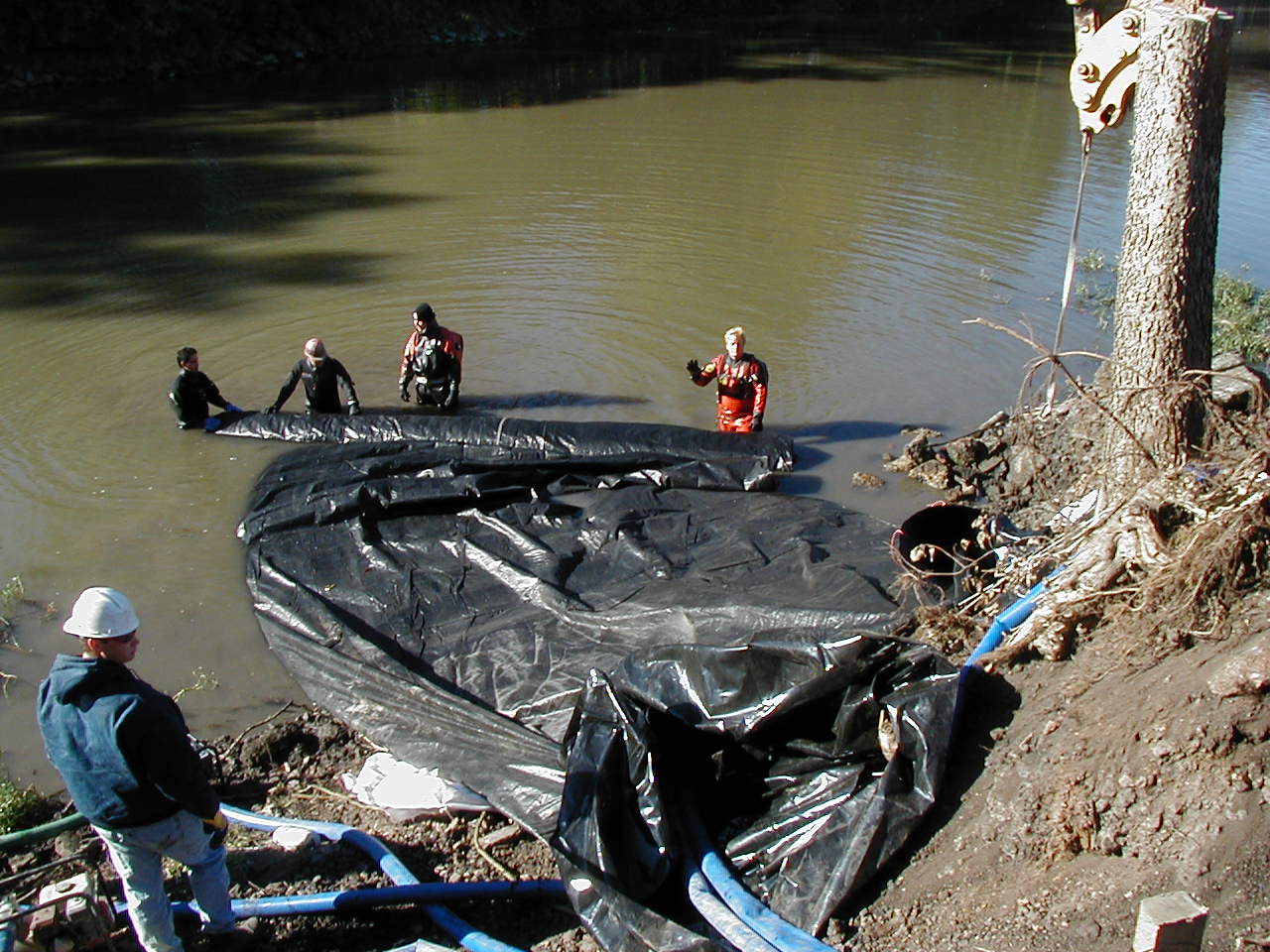
To rotate the AquaDam, the head pressure needs to be decreased, which is achieved by turning down or shutting off the pumps. The workers positioned on the outer edge of the AquaDam® step back, while the worker stationed on the inside (wearing red) maintains his position, enabling the AquaDam® to flex around him. AquaDams are constructed using lightweight and flexible materials, allowing them to float when empty in deep enough water.
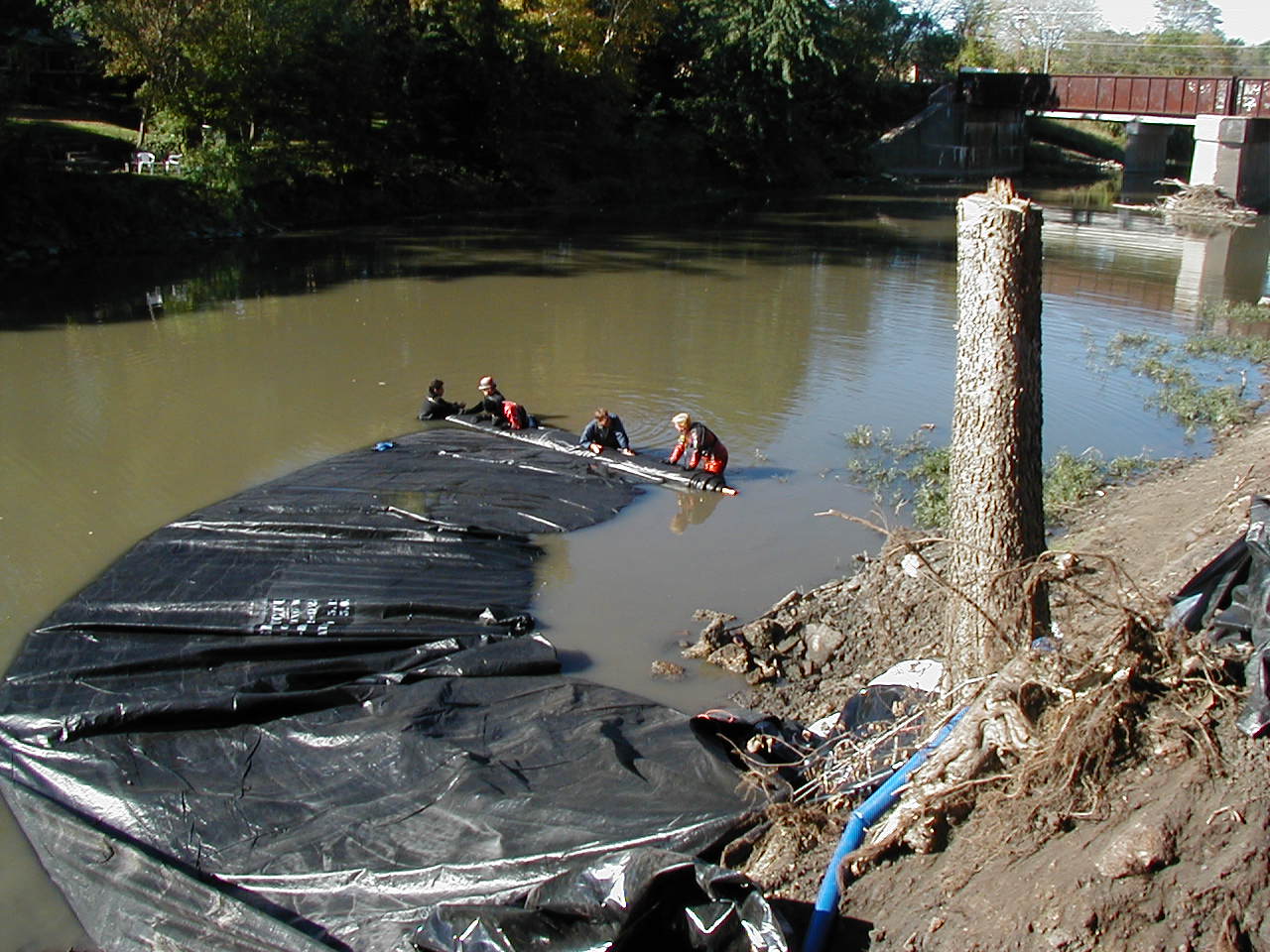
Once the turn is completed, the pumps can be started and the AquaDam® is allowed to continue to unroll, while the workers continue to maintain the inside head pressure.
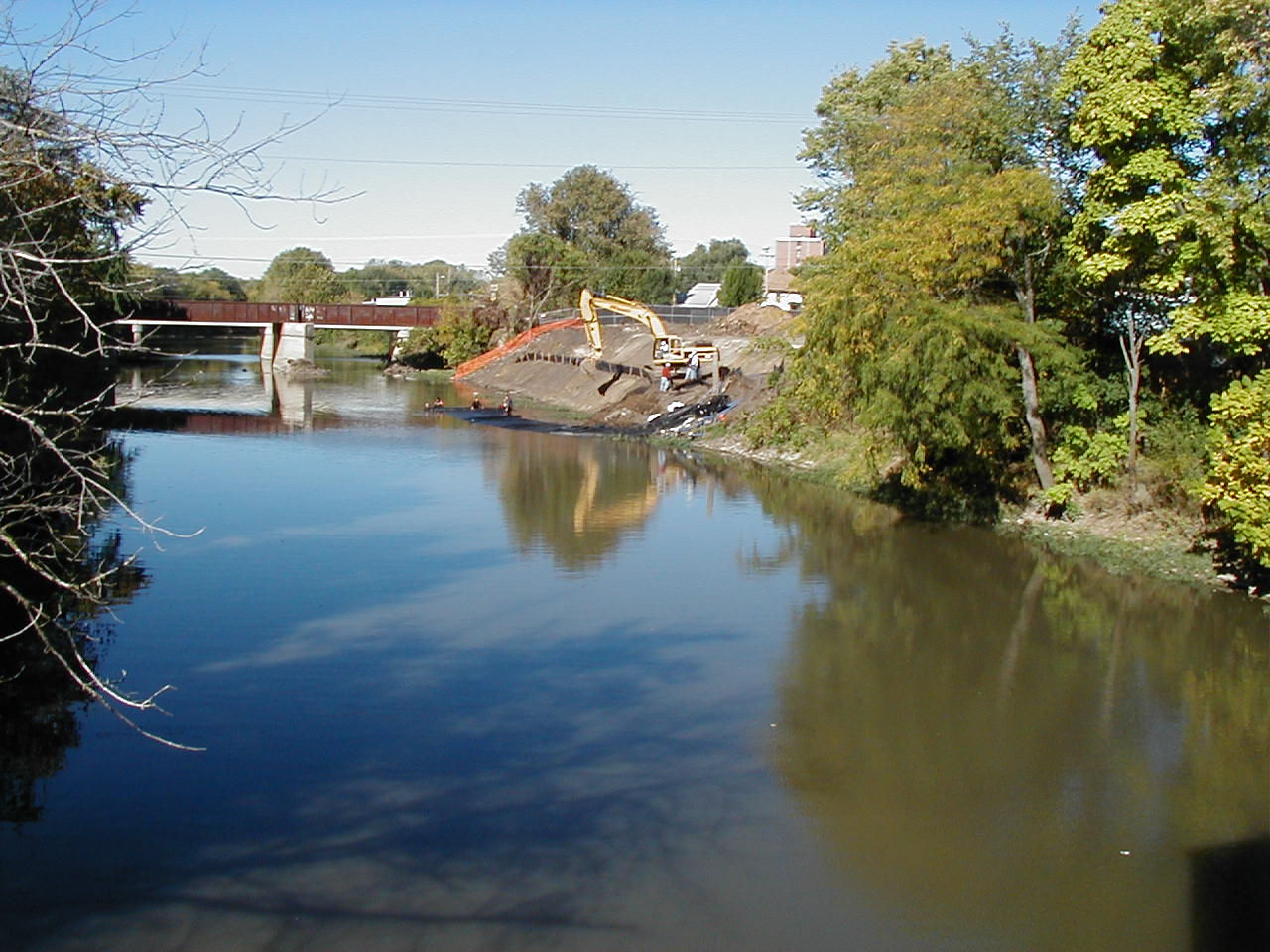
A view from upstream. The view is deceiving; the water on the left side of the AquaDam® is about three to four feet deeper than the water on the right.
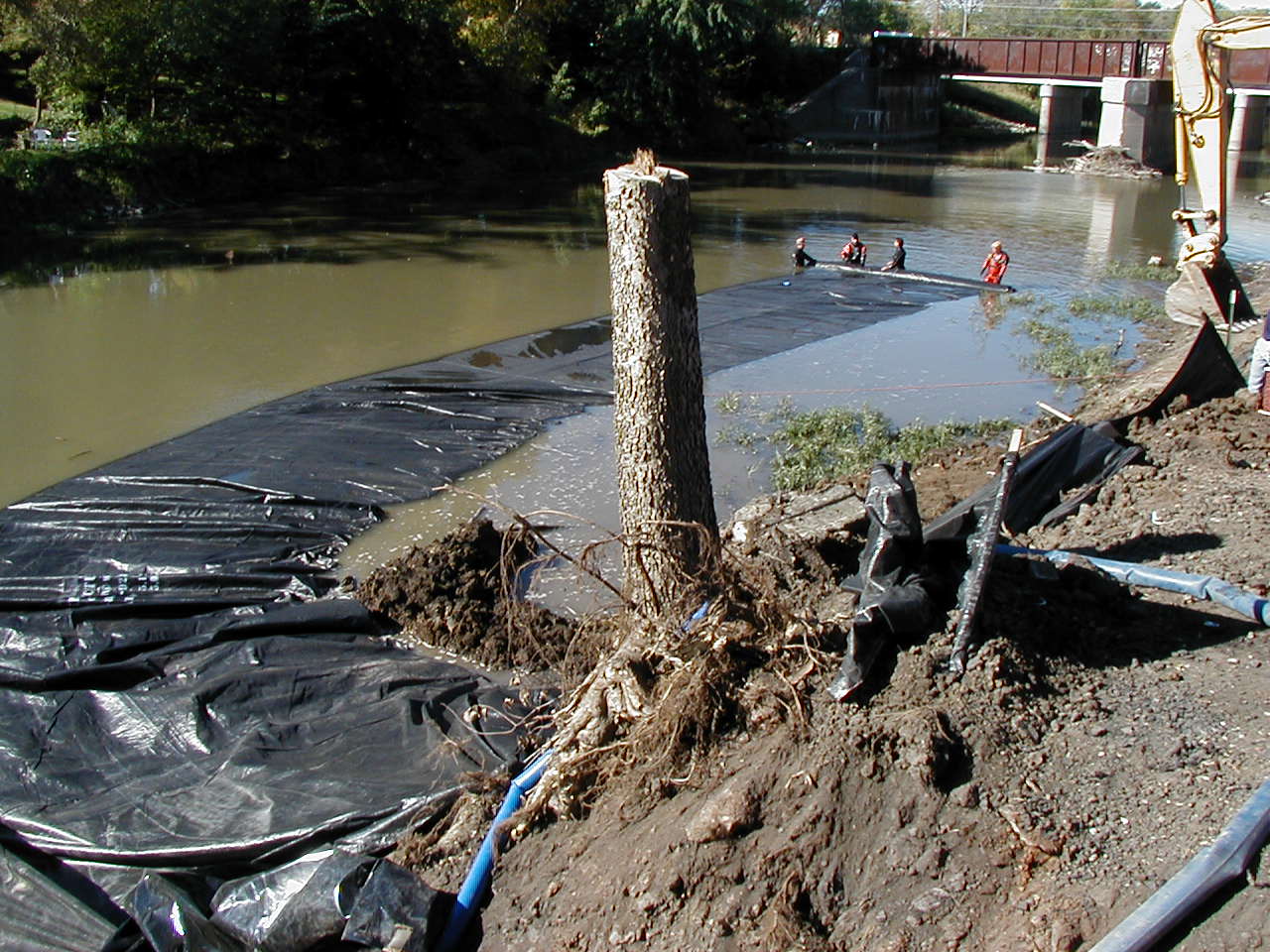
To get the job done right, it is important to take it easy and not get in a hurry. The head pressure must be maintained or the AquaDam® will become buoyant and may float down steam.
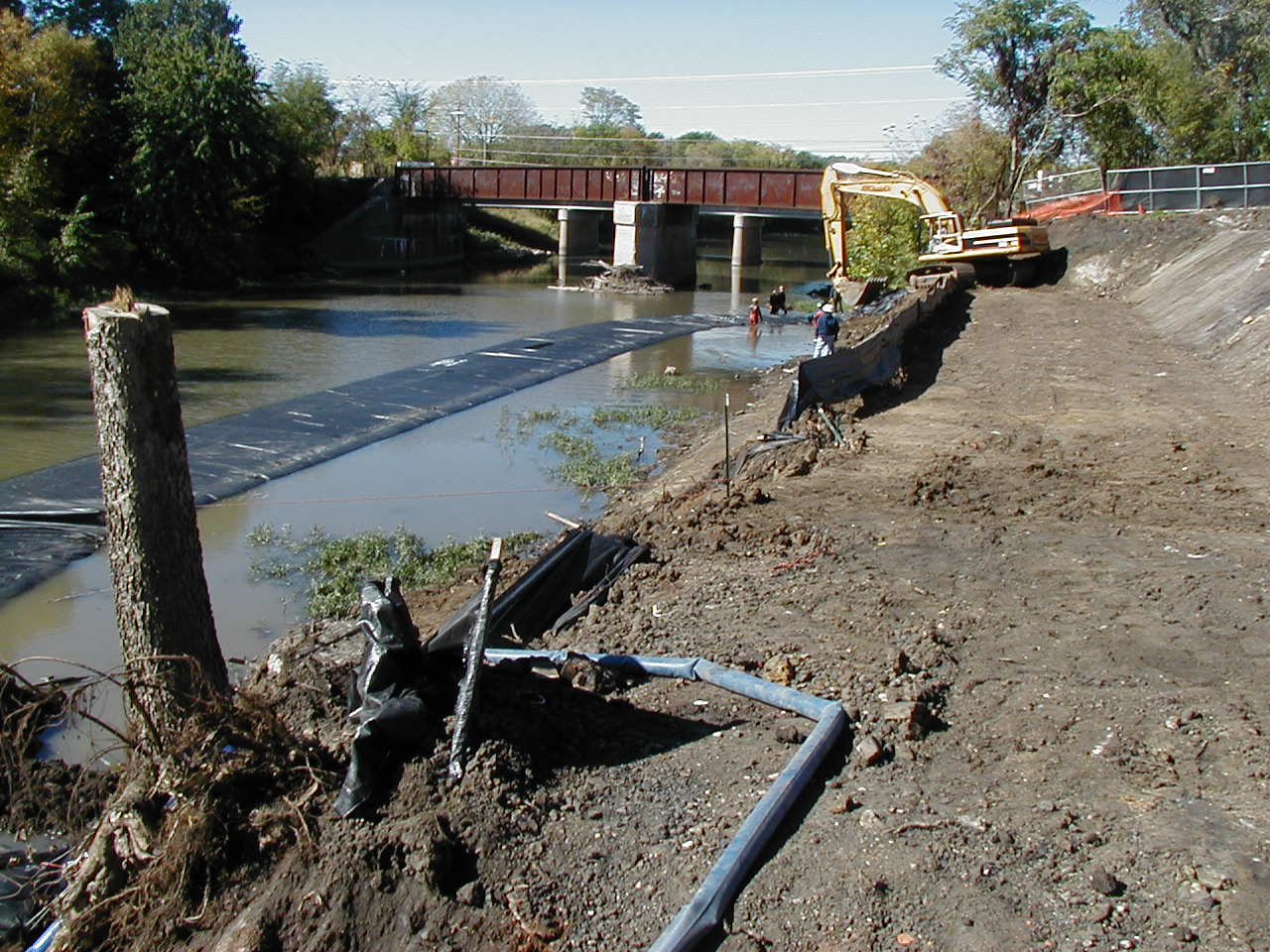
Once the AquaDam® unrolls to the end of the work area, it is turned back into the shore and allowed to unroll until it abuts square into the bank.
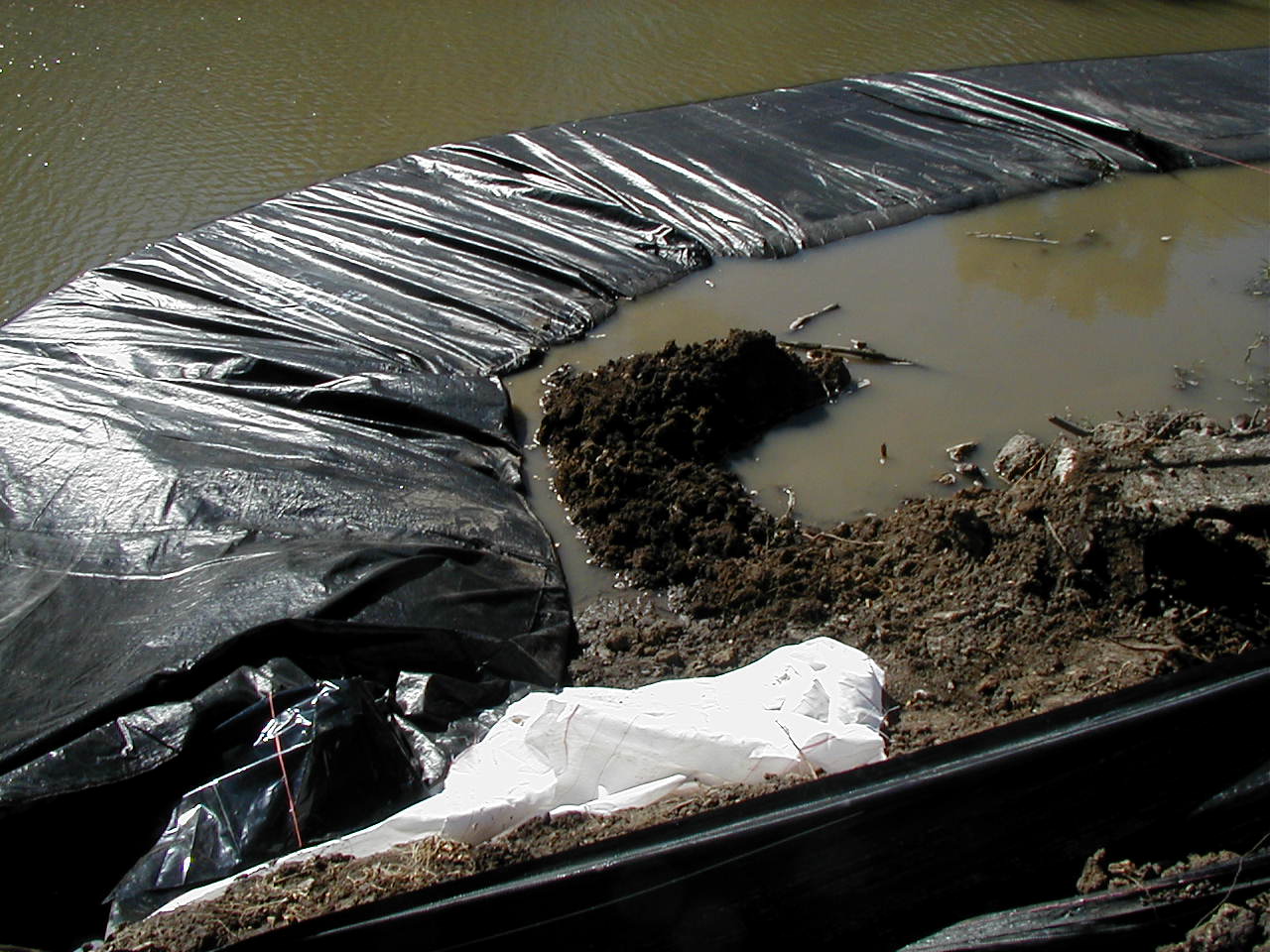
Nonabrasive fill is placed next to the AquaDam® on the upstream end of the work area to help hold it in place as filling continues.
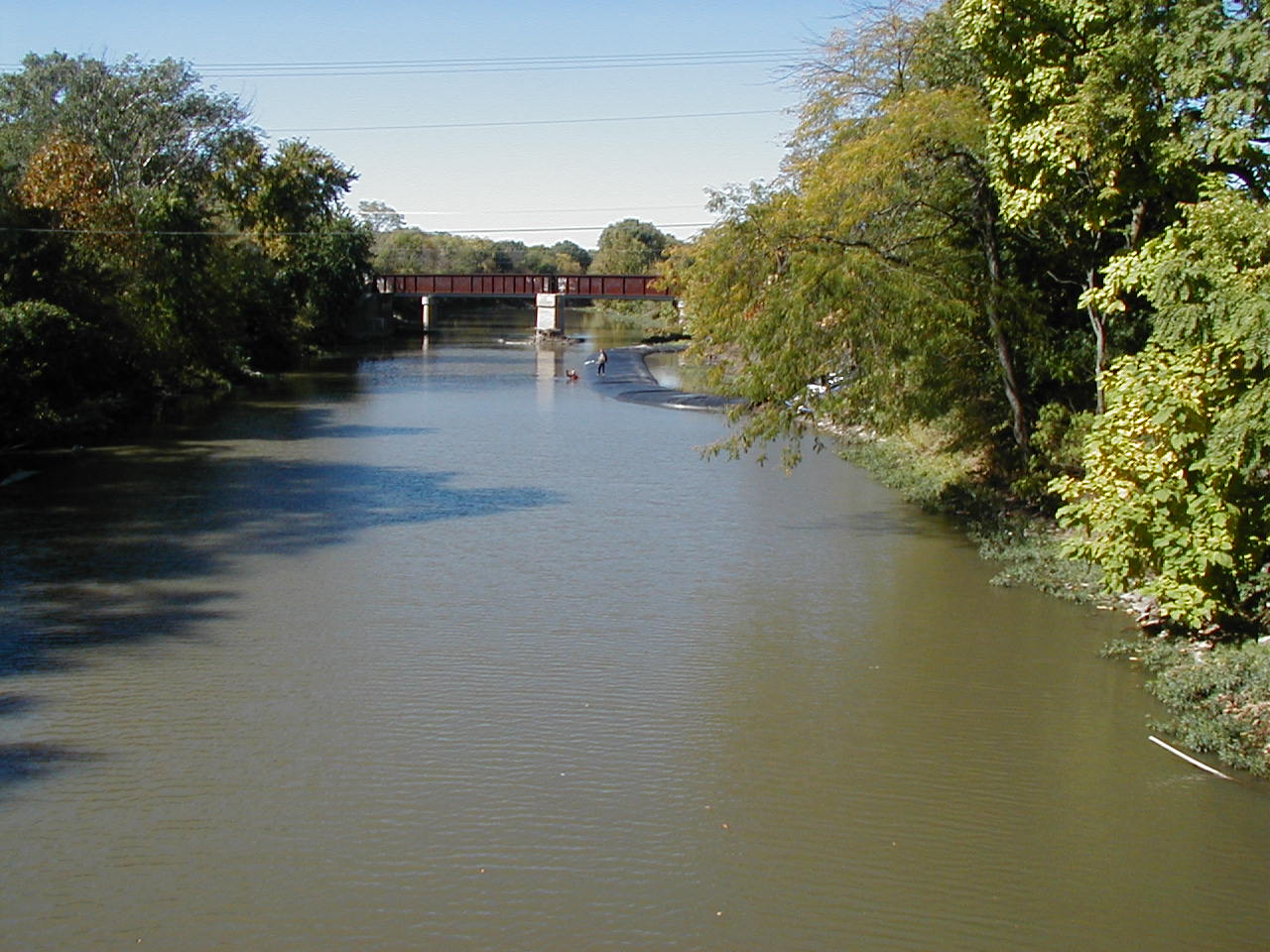
This picture gives a better idea of the water depth along the outside edge of the AquaDam.
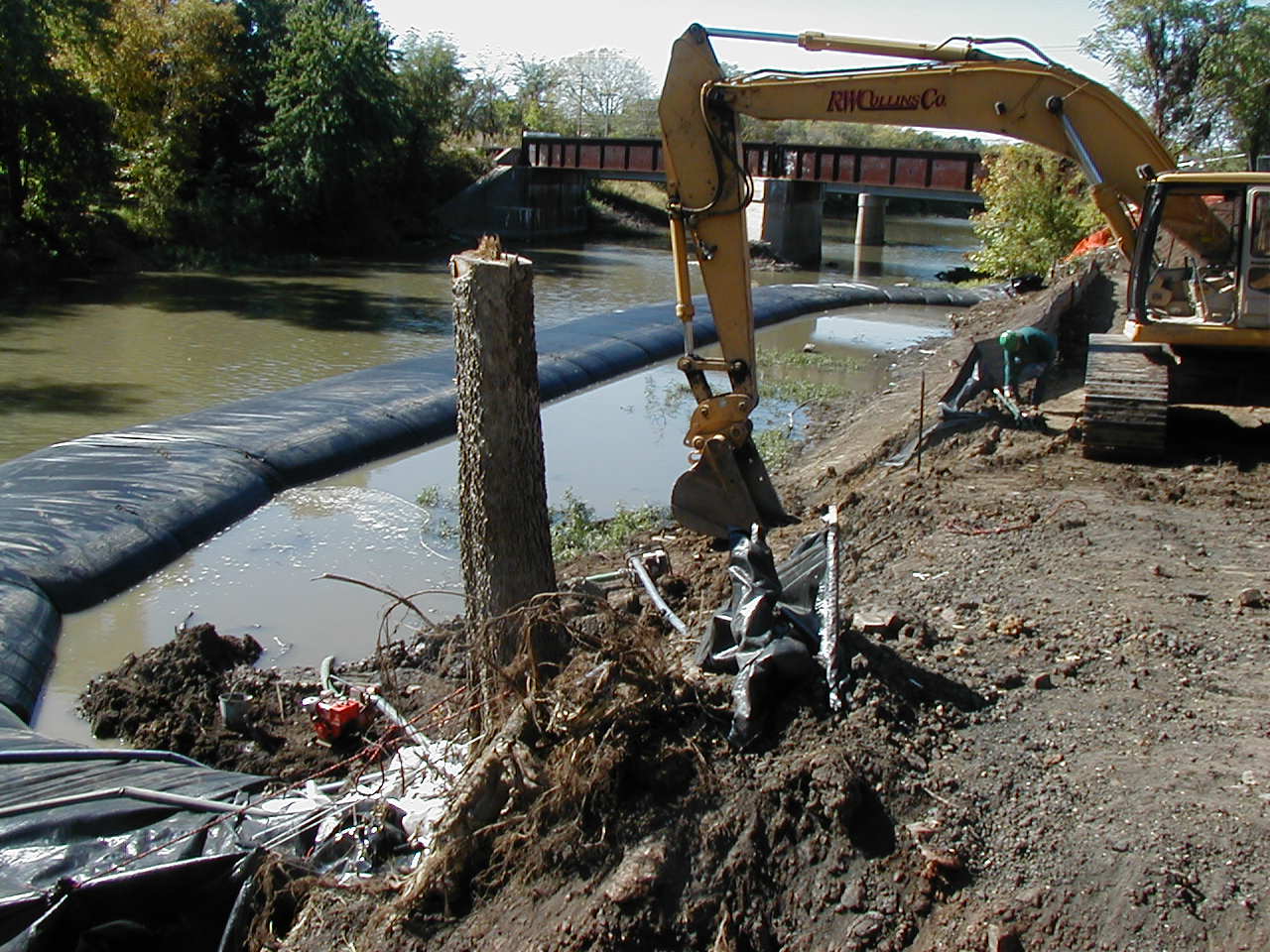
Once the AquaDam® is completely full, excavation of the contaminated soil can begin.
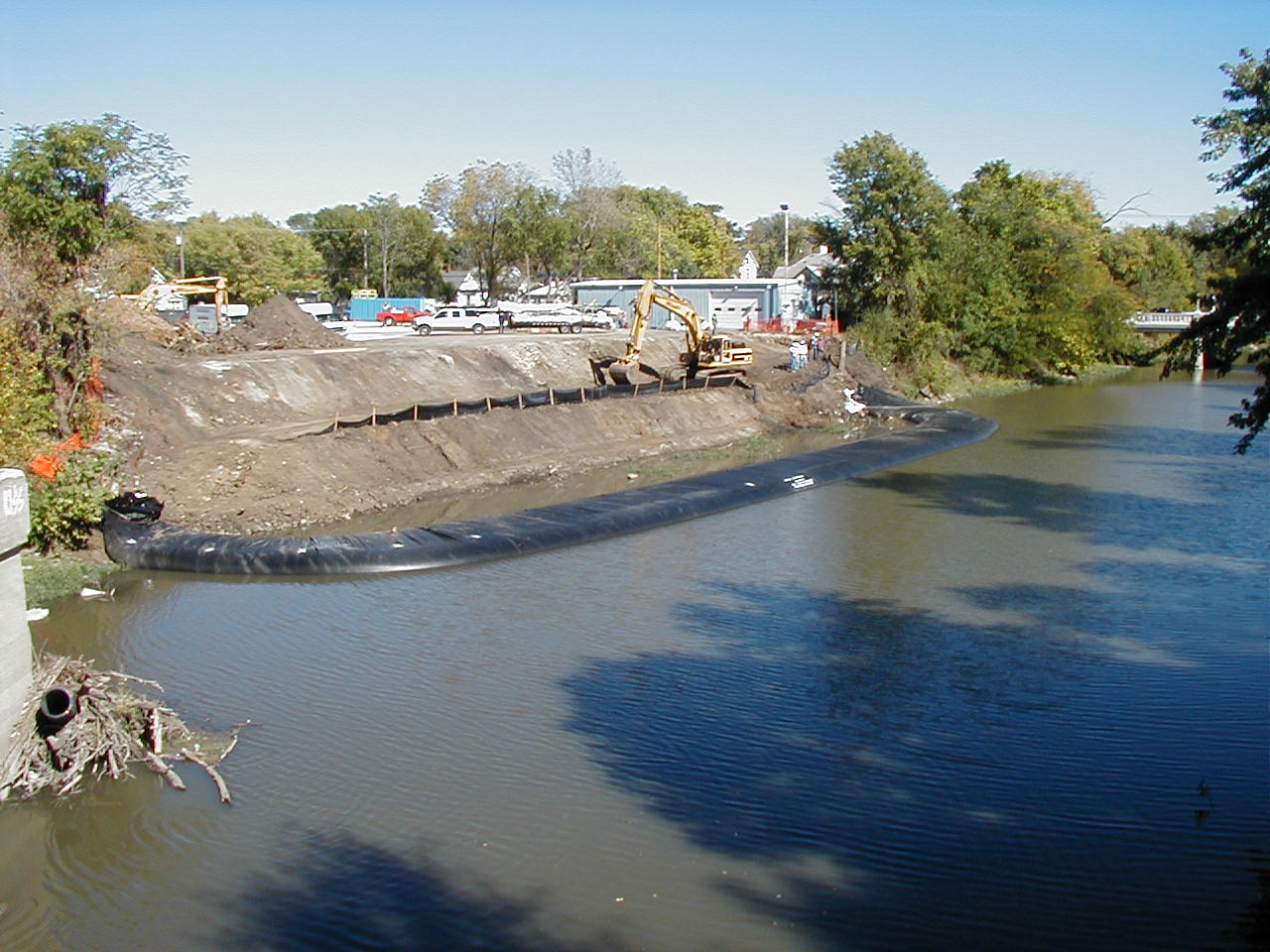
Since the AquaDam® prevents any excavated material from contaminating the river, the work can be carried out quickly and with as little complication as possible.
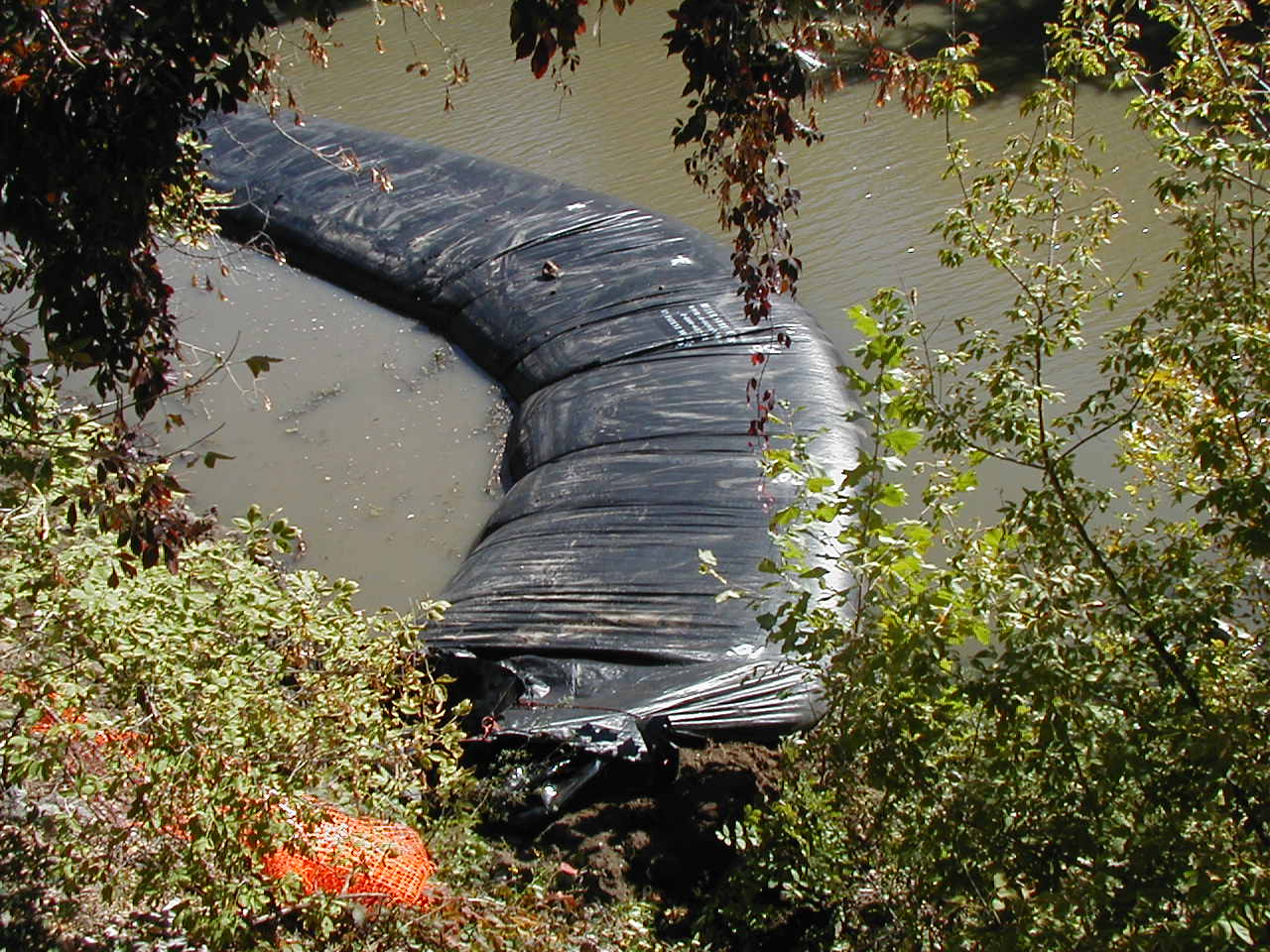
A view of where the AquaDam® ties into the bank. The end has been tied off to help secure it.
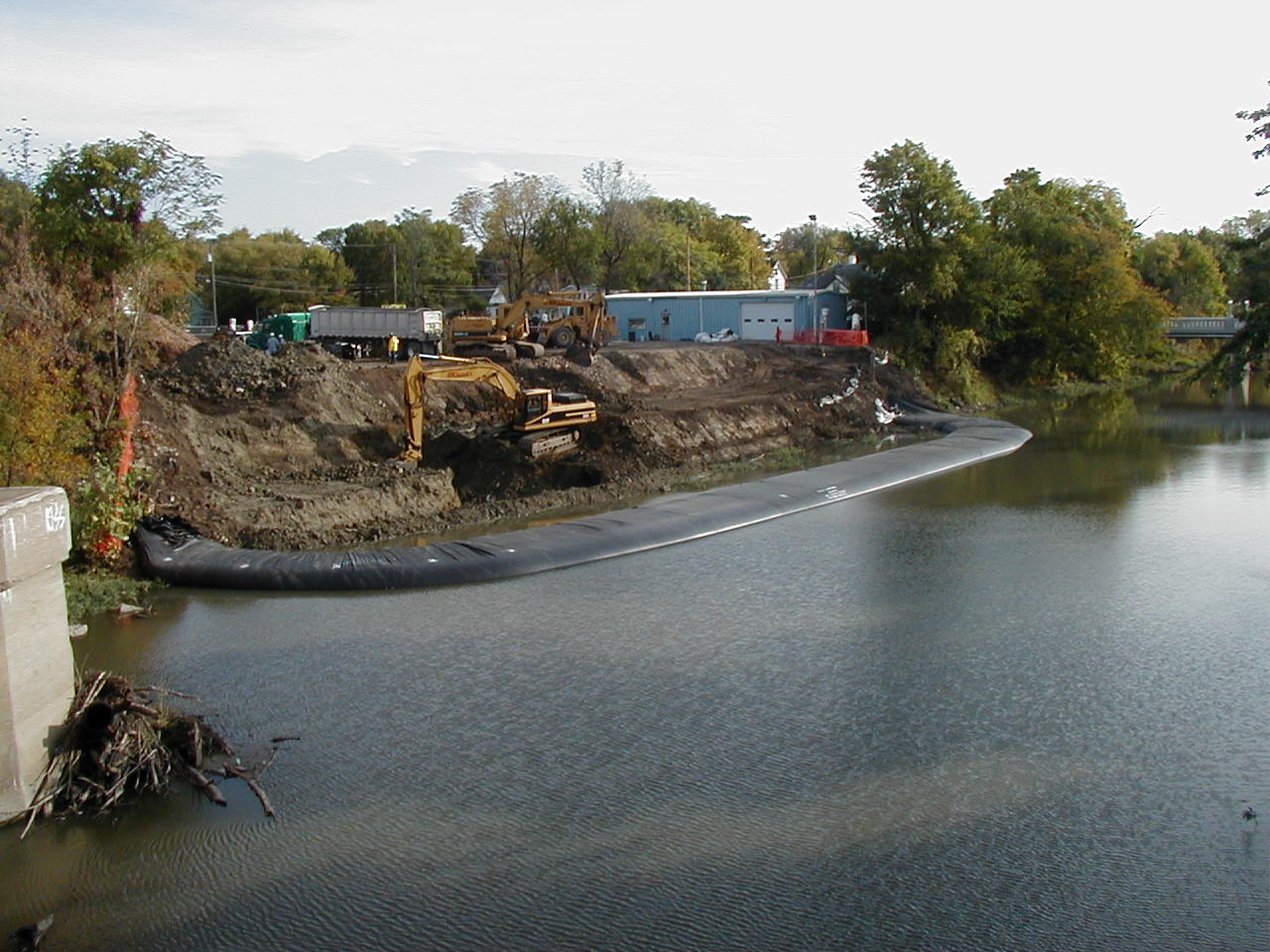
With the AquaDam® in place the soil can be removed from well below water level.
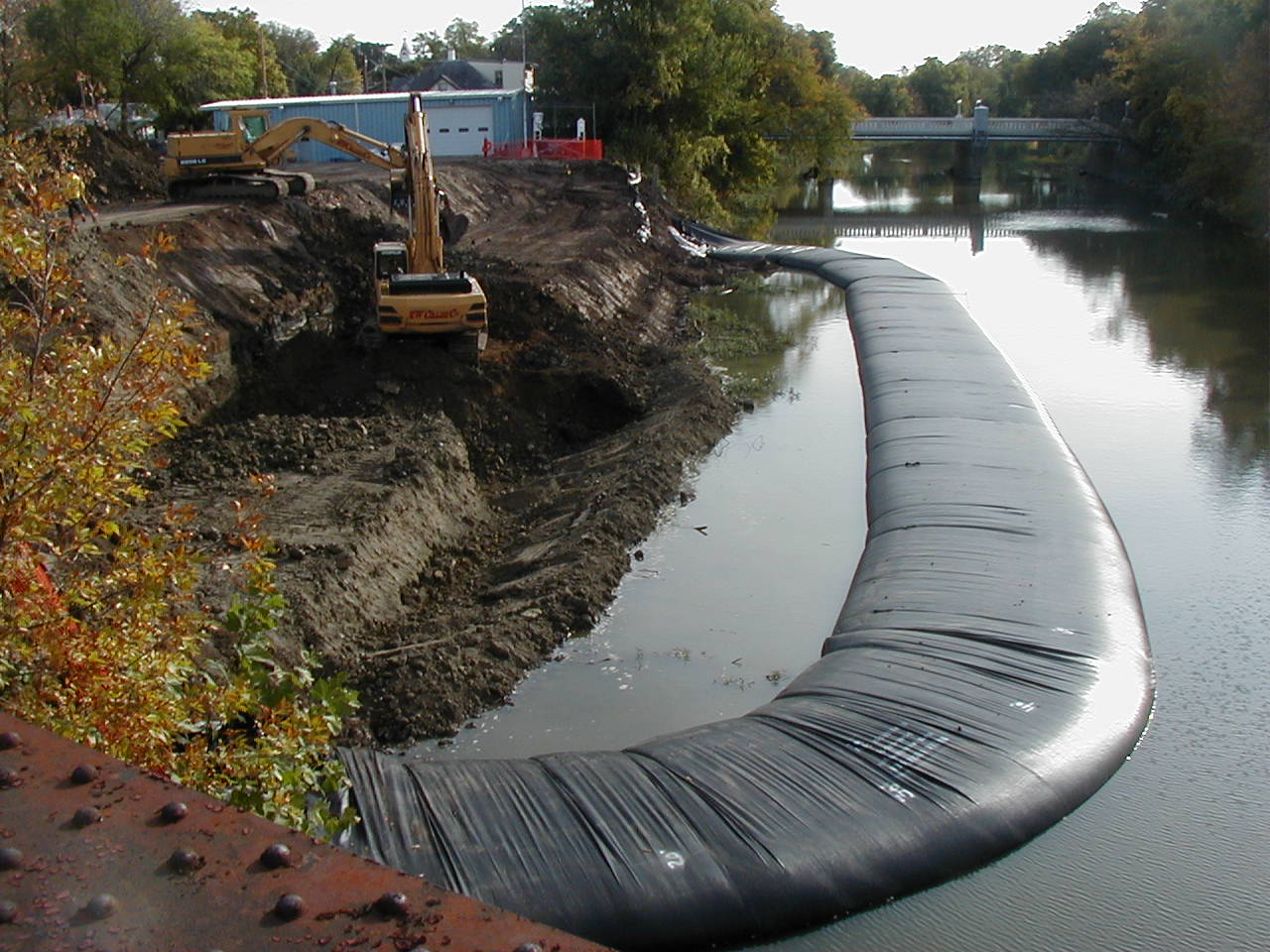
One excavator cuts material from the lower level, then dumps it at a higher point behind itself. Another excavator located in the parking lot above removes this second pile and deposits it in one of the waiting dump trucks for removal.
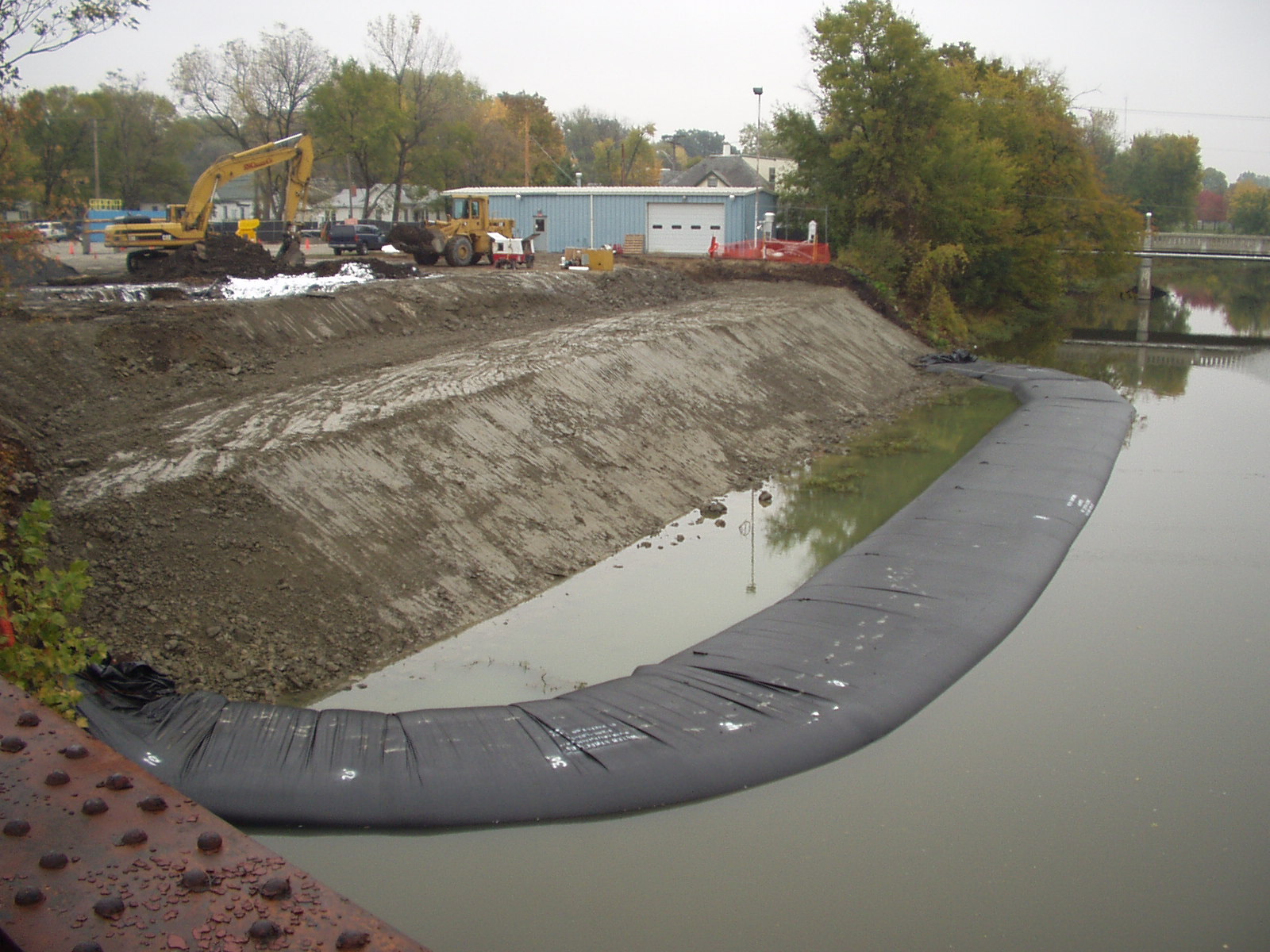
A view of the completed work site. All of the contaminated soil has been removed and the area has been back-filled with clean material. The AquaDam® will be removed, and no contaminants will have entered the stream during the entire course of the project.
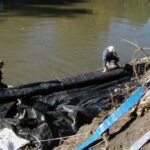
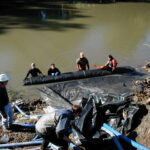
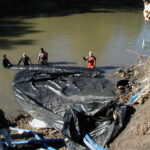

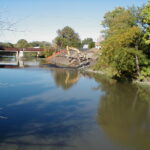
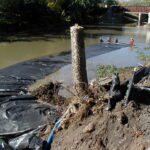
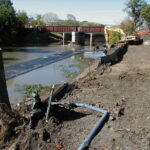
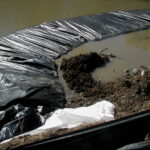
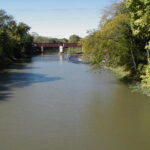
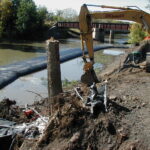
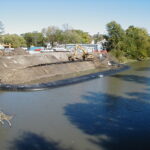
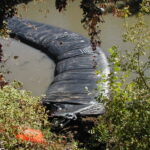
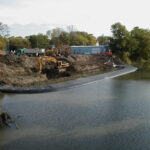
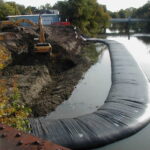
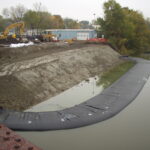
AquaDam, Horseshoe/”U” Shape Configuration, Shoreline Isolation, Contaminated Soil Removal
